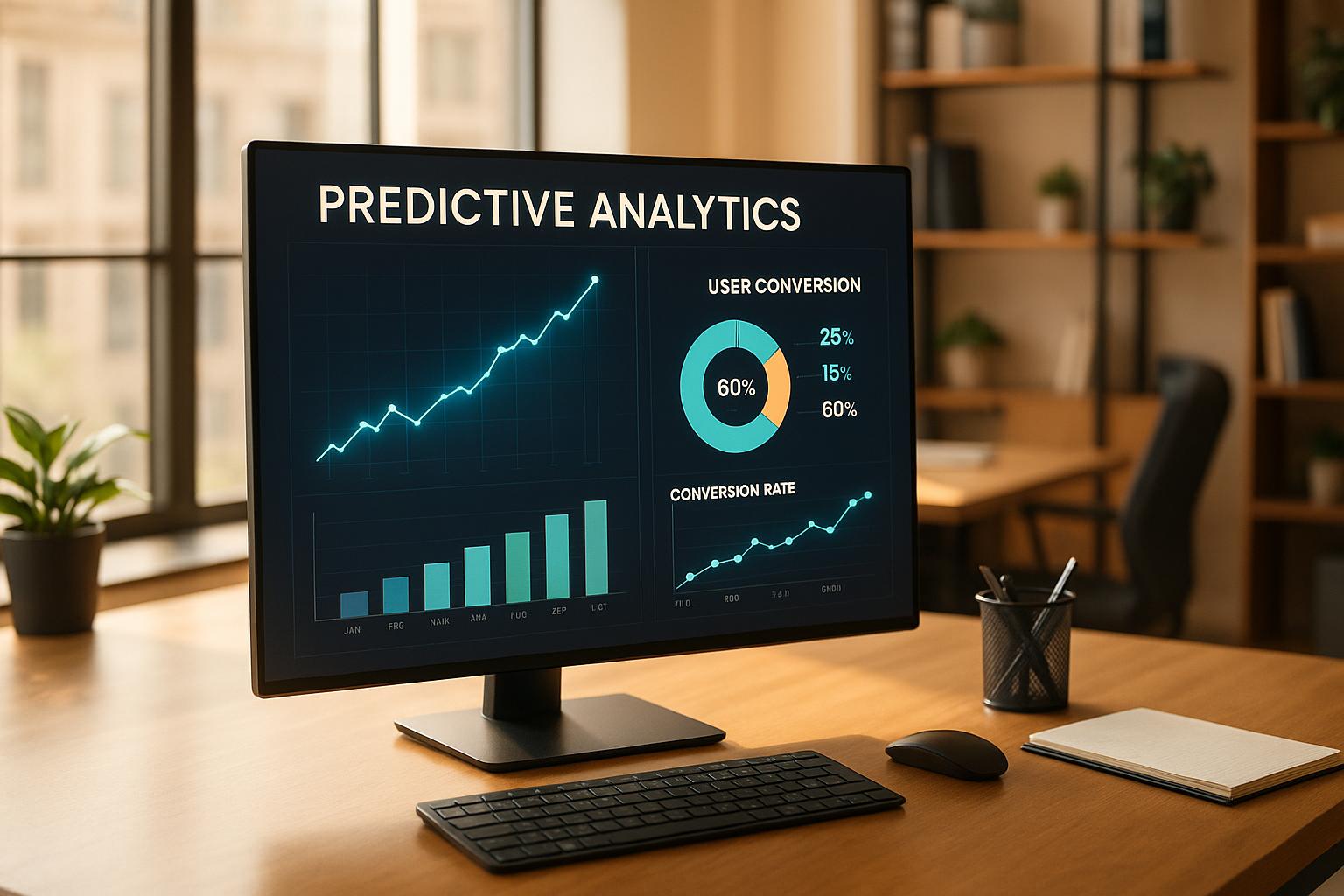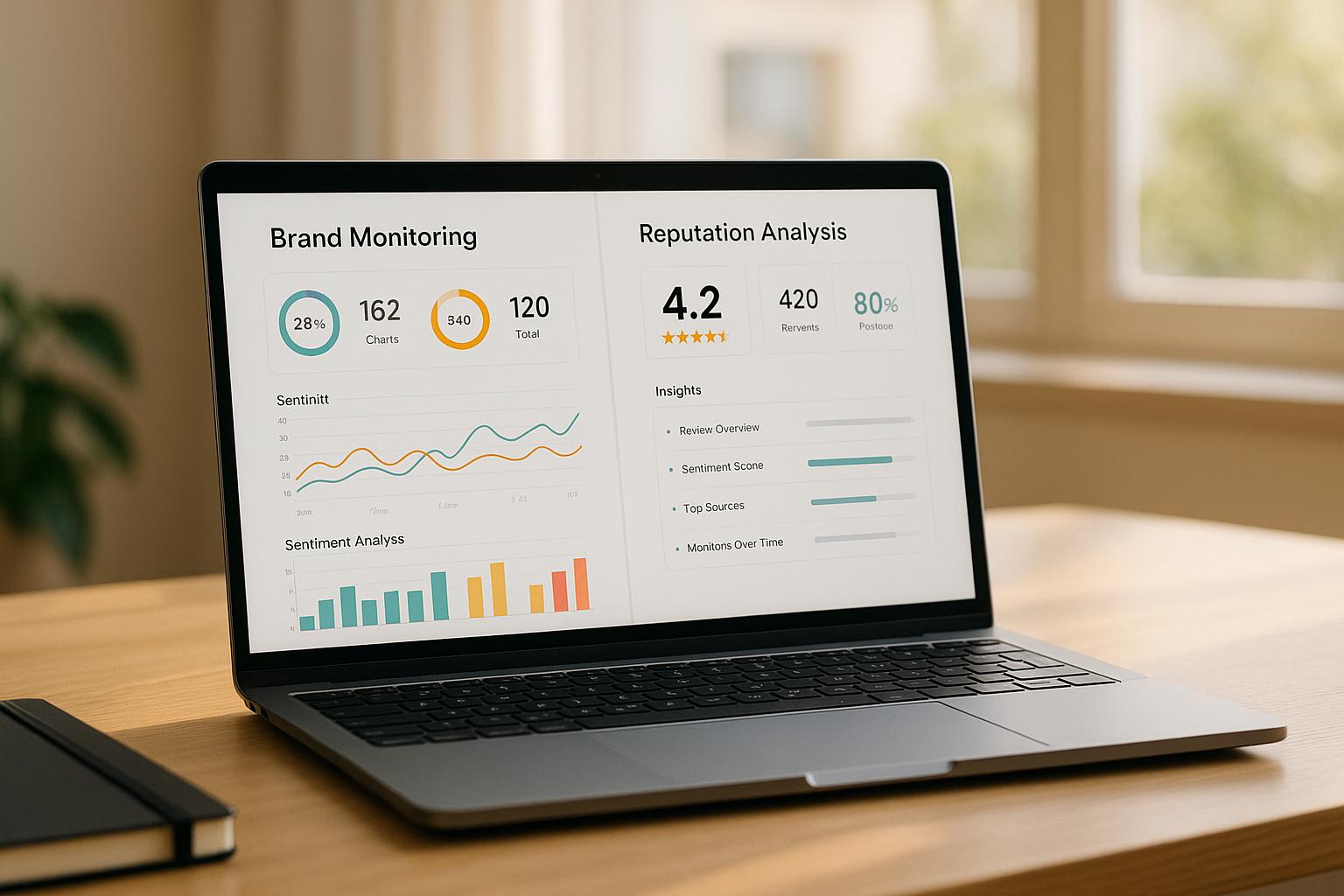Customer Lifetime Value (CLV) tools combined with Customer Relationship Management (CRM) systems help businesses focus on long-term customer relationships, not just one-time sales. This integration simplifies data management, improves customer insights, and boosts decision-making. Here's a quick overview:
- CLV Basics: Tracks customer purchase history, engagement, and behavior to estimate their total value to the business.
- CRM Role: Automates CLV calculations, monitors customer interactions, and provides real-time insights.
- Key Features:
- Data Collection: Reduces manual errors.
- Real-time Analytics: Updates CLV as customer behavior changes.
- Predictive Modeling: Forecasts future value.
- Segmentation Tools: Groups customers for targeted strategies.
- Benefits:
- Retain high-value customers by spotting churn risks early.
- Allocate marketing budgets efficiently for higher ROI.
- Improve team collaboration with shared insights.
Main Functions of CLV-CRM Integration
Centralized Customer Data Analysis
Integrating CLV with CRM systems streamlines data collection and transforms it into insights businesses can act on. By tracking every customer interaction - whether it’s a purchase or a simple engagement - these integrations provide a clear picture of customer value. For example, tools like HubSpot monitor metrics related to acquisition and retention, while Mosaic automates CLV calculations across various product lines.
Customer Segmentation Tools
With centralized data in hand, segmentation tools take things a step further by categorizing customers more effectively. This helps businesses zero in on their most valuable customers and uncover potential growth opportunities. Segmentation often involves analyzing key factors like:
| Segmentation Factor | Purpose |
|---|---|
| Purchase History | Tracks spending trends |
| Engagement Level | Evaluates interaction frequency |
| Risk Assessment | Gauges likelihood of churn |
| Value Potential | Forecasts future customer worth |
These insights allow companies to craft more targeted marketing campaigns and tailor services to meet the needs of their high-value customers. For instance, if a drop in engagement is detected among top-tier customers, businesses can quickly roll out retention strategies, such as loyalty programs or premium service offerings, to re-engage them.
Future Behavior Forecasting
Predictive analytics, a key feature of integrated CLV-CRM systems, uses historical data to anticipate future customer actions and their potential value. By analyzing past behaviors, these AI-driven tools can spot early signs of churn or highlight growth opportunities. This enables businesses to stay ahead by addressing customer needs before they arise, identifying promising prospects, projecting revenue with greater precision, and focusing retention efforts where they matter most. These forecasting capabilities also simplify the integration process by ensuring data is well-organized and systems are properly connected.
Setting Up CLV-CRM Integration
Data Organization and Structure
Before diving into CLV analysis, it's crucial to get your CRM data in order. Start by cleaning the data - remove duplicates and update outdated records. Then, focus on standardizing key data fields that directly impact CLV calculations:
| Data Field | Required Format | Purpose |
|---|---|---|
| Customer ID | Unique identifier | Consistent customer tracking |
| Transaction Dates | MM/DD/YYYY | Timeline analysis |
| Purchase Amounts | $X,XXX.XX | Revenue calculations |
| Interaction History | Timestamped events | Engagement tracking |
To maintain accuracy, establish clear data governance policies. Involve both IT and marketing teams to ensure alignment, and schedule regular data quality audits. This will help keep your CLV calculations accurate and actionable. Once your data is organized, configure API connections to enable smooth data transmission.
Connecting Systems Through APIs
Seamless data flow between your CRM and CLV tools is essential, and APIs make this possible. Platforms like HubSpot and Salesforce offer detailed API documentation to guide you through the process.
"Real-time synchronization via webhooks or event-driven APIs ensures CLV reflects current interactions, reducing lag and enhancing decision accuracy", explains a HubSpot integration specialist.
Here’s how to set up your API connections effectively:
- Authentication setup: Use secure OAuth protocols to protect data.
- Data mapping: Align CRM fields with the requirements of your CLV tool.
- Sync intervals: Decide between real-time updates or scheduled syncs.
- Error handling: Create protocols to manage failed connections efficiently.
By following these steps, you can ensure your CRM and CLV tools communicate seamlessly.
System Integration Checks
Once your API connection is in place, it’s time to test the integration. Conduct thorough validation checks by comparing sample records between systems. Mosaic’s implementation team recommends using these tests to catch any discrepancies early.
A great example comes from a U.S. retailer that integrated HubSpot CRM with their CLV analytics tool. By aligning data fields and enabling real-time API synchronization, they were able to identify key retention drivers. This led to a 15% increase in their average customer lifetime value within just six months.
Watch out for common integration issues, such as:
- Inconsistent data formats
- Missing or incorrect field mappings
- Unstable API connections
- Errors in CLV calculations
To keep everything running smoothly, deploy automated monitors to track data flow and flag synchronization problems. Regular system checks will help you maintain data integrity, ensuring your CLV calculations remain dependable over time.
How to Use Your CRM to Increase Customer Lifetime Value (Complete CRM Tutorial)
sbb-itb-5174ba0
Business Impact of CLV-CRM Integration
Once your CLV-CRM integration is up and running, the positive effects on business performance start to show quickly.
Customer Retention Methods
Integrating CLV with your CRM provides clear, actionable insights to help retain your most valuable customers. Salesforce research highlights that companies using predictive analytics in their CRM systems have reduced customer churn by up to 15% through timely interventions. These insights can guide strategies like offering premium support to top-tier customers, creating targeted promotions for mid-tier clients, and proactively re-engaging customers who are at risk of leaving.
Marketing Budget Efficiency
With CLV-CRM integration, marketing budgets can be allocated more effectively. By concentrating efforts on customer segments with the highest potential returns, businesses have seen up to a 30% boost in marketing ROI.
- Precise targeting: Tailors campaigns to focus on high-value customer groups.
- Smart automation: Dynamically adjusts campaign spending based on customer value.
- Performance tracking: Continuously evaluates campaign success across different segments.
Team Communication Improvements
When CLV data is integrated into CRM systems, it creates a shared understanding of customer insights across departments. Sales teams can focus on high-value prospects, support teams can swiftly resolve issues for key customers, and marketing teams can fine-tune campaigns based on real customer behavior. Automated CRM reporting ensures everyone stays informed about CLV trends, enabling quick and coordinated actions.
Conclusion
Combining Customer Lifetime Value (CLV) with Customer Relationship Management (CRM) systems is reshaping how companies manage customer relationships by enabling smarter, data-driven decisions. Businesses using these integrated solutions have seen tangible results, like a 27% rise in customer retention and a 25% improvement in marketing ROI as of 2024. This approach simplifies data management while enhancing customer interactions.
By centralizing customer data and automating CLV calculations, businesses gain real-time insights that make resource allocation more efficient and allow for immediate strategy adjustments. These systems not only minimize manual errors but also ensure customer metrics stay up-to-date.
With the integration of AI and predictive analytics, CLV-CRM systems empower companies to adapt strategies dynamically. Real-time CLV tracking helps businesses respond swiftly, improving both retention rates and revenue. As these technologies evolve, they’re paving the way for advanced segmentation, personalized customer interactions, and proactive retention strategies.
In today’s competitive landscape, integrating CLV with CRM systems is no longer optional - it’s a necessity. The ability to monitor, analyze, and act on customer value in real time is fundamentally changing how companies engage with their customers, driving long-term growth and profitability.
For further insights and to explore tools that can refine your marketing strategy through data-driven decisions, check out the Marketing Analytics Tools Directory.
FAQs
How can integrating CLV tools with CRM systems help enhance customer retention strategies?
Integrating Customer Lifetime Value (CLV) tools with Customer Relationship Management (CRM) systems gives businesses a clearer picture of how customers interact and contribute to their success. By merging CLV data with CRM records, companies can pinpoint their most valuable customers, anticipate future buying patterns, and craft retention strategies that hit the mark.
This combination unlocks opportunities like personalized marketing campaigns, more effective loyalty programs, and proactive customer service. For instance, CLV insights can help businesses focus their efforts on high-value customers, ensuring stronger engagement and building lasting satisfaction. This data-driven strategy doesn’t just enhance retention - it also boosts revenue over time.
How can I successfully sync data between CLV tools and CRM systems using APIs?
To ensure seamless data sharing between customer lifetime value (CLV) tools and CRM systems through APIs, here are some essential steps to follow:
- Check API compatibility: Confirm that both your CLV tool and CRM system support API integration and that their APIs can communicate effectively.
- Secure authentication: Use methods like API keys or OAuth protocols to establish a safe connection between the two platforms.
- Align data fields: Match the fields in your CLV tool with those in your CRM system to prevent mismatches and ensure data flows accurately.
- Determine sync frequency: Decide if you need real-time updates or periodic synchronization, depending on your business requirements.
- Test thoroughly: Conduct initial tests to catch and fix any issues before fully implementing the integration.
These steps will help your CLV tools and CRM systems sync smoothly, offering better insights and improving decision-making processes.
How do CLV tools integrate with CRM systems to predict customer behavior and improve marketing strategies?
Customer Lifetime Value (CLV) Tools and CRM Integration
CLV tools work hand-in-hand with CRM systems, providing businesses with the ability to predict customer behavior and refine their marketing strategies. By tapping into predictive analytics, these tools analyze past customer data to anticipate future purchasing habits, the likelihood of churn, and potential revenue over specific periods.
When combined with a CRM, CLV tools allow businesses to:
- Pinpoint their most valuable customers and focus marketing efforts on them.
- Tailor marketing messages to align with individual customer preferences.
- Distribute resources more effectively to achieve higher returns on investment.
Setting up CLV tools alongside your CRM usually involves syncing customer data, configuring analytics dashboards, and enabling automated reporting. This integration empowers businesses to make smarter, data-driven decisions, ensuring marketing efforts are both impactful and customer-centric.


